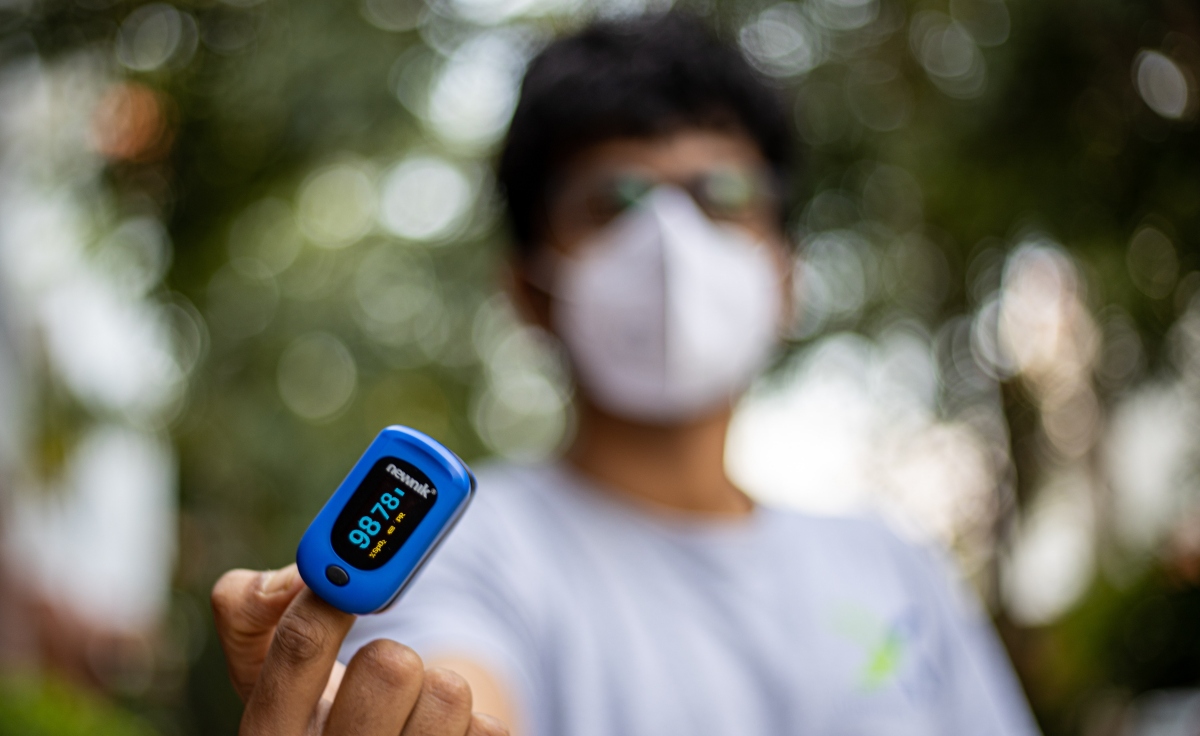This article was first published on The Wire Science.
New Delhi: Evidence is mounting that pulse oximeters, the devices that became ubiquitous during the COVID-19 pandemic to measure the oxygen concentration in a person’s blood, don’t work accurately for people with dark skin.
According to a report in Nature News, a retrospective report published in December 2020 – at the end of the first year of the pandemic – showed that pulse oximeters “overestimate the true oxygen saturation of Black people”. Specifically, Black people were found to be three-times more likely to not be diagnosed with hypoxemia – having low oxygen in the blood – than White people.
This finding prompted other studies, which also found that pulse oximeters were less accurate when used with people who self-identified as Black, Asian, Hispanic or a combination of these ethnicities.
The authors of the Nature report said that because inaccurate readings have led to medical practices that only exacerbate the problem, pulse oximetry has become “emblematic of the broader issue of racial bias in medicine”.
A paper published in the journal JAMA Internal Medicine in May 2022 also found biases. Its authors wrote:
Overestimation of oxygen saturation in patients with dark skin tones has serious clinical implications, as these patients may receive insufficiently rigorous medical care when pulse oximeter measurements suggest that their oxygen saturation is higher than the true value.
Recent studies have linked pulse oximeter inaccuracy to worse clinical outcomes, suggesting that pulse oximeter inaccuracy contributes to known racial health disparities.
According to an article in Pulmonology Advisor, the authors offered that inaccuracies in pulse oximetry should be examined as one way to explain disparities in COVID-19 outcomes among people of different races, and that the findings could have implications for monitoring and treating other respiratory illnesses as well.
Patients whose blood oxygen is overestimated are said to have “occult hypoxemia”, i.e. though pulse oximeters measure oxygenation of more than 92%, arterial blood-gas tests indicate that the actual oxygen saturation level is lower than 88%.
When haemoglobin in the blood receives oxygen to hold, it also becomes able to absorb infrared light more efficiently than red light. Oximetry takes advantage of this. In simple terms, an oximeter shines both red light and infrared radiation through the skin. A sensor observes the composition of the reflected radiation, and produces a signal if it detects less infrared light coming back. The strength of this signal is proportional to the amount of oxygen in the haemoglobin.
For many years, scientists assumed that the biomolecular composition of an individual wouldn’t affect the oximeter’s reading because the device is calibrated using the average values of both the red and the infrared signals. Theoretical studies also assumed the finger to be a homogeneous material that absorbed light in uniform fashion.
What they both missed was that, as Nature wrote, “light scatters differently depending on its wavelength. Such scattering effects are substantial in tissues with a multilayered anatomical structure, such as those in the finger.”
A literature review published in Annals of the American Thoracic Society in September this year also found that patients with dark skin may “receive an overestimate of their true oxygen saturation through pulse oximetry” and may experience “worse clinical outcomes” due to such misdiagnosis.
The reviewers said that the underlying reasons for decreased pulse oximeter accuracy in dark skinned people “may be related to failure to control for increased absorption of red light by melanin during device development”. It also points to insufficient inclusion of individuals with dark skin tones during device calibration, they added.
They also discussed the fact that there is no easy algorithm available to correct pulse oximetry bias. According to them, the US Food and Drugs Administration (FDA) and the manufacturers of the devices “bear the responsibility of improving the performance of pulse oximeters”. Approval criteria for oximeters currently do not require “robust data on individuals with dark skin tones”, they noted.
According to Nature, the FDA last announced that its Medical Devices Advisory Committee would convene in November to “gather all available evidence on the issue and to determine ways of improving the accuracy of pulse oximeters”.
Featured image: Syed Ali/Unsplash

